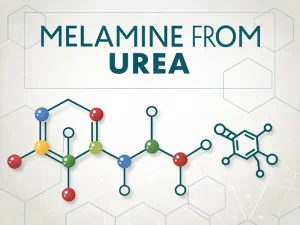
Melamine Packaging
Tech Blog Melamine packaging For manufacturers, inaccurate packaging not only fails to meet national standards but also increases labor costs and the risk of product

In the plastics manufacturing industry, amino molding compounds are a common and essential material. To ensure product quality, conducting a formulation analysis of amino molding compounds is indispensable. Through formulation analysis, the content and proportion of each component in the plastic can be determined, thereby guaranteeing the product’s performance and service life.
The main components of amino molding compounds include amino resins, additives, diluents, and necessary auxiliary agents. For different products, the proportions and types of components may vary. The first step in formulation analysis is to identify the types and ratios of the main components.
Each component in an amino molding compound has a specific function and contribution. Through formulation analysis, the performance and contribution of each component can be thoroughly understood, providing a basis for optimizing product performance.
Based on the results of the formulation analysis, an optimal formulation can be determined to ensure that the proportion and dosage of each component meet the product’s requirements. For example, in automotive parts manufacturing, the dosage of corresponding additives can be increased to enhance impact resistance.
Content testing is a critical aspect of amino molding compound analysis. By quantitatively analyzing the content of various components, product quality can be ensured to meet the required standards.
Selecting Appropriate Testing Methods
For different components, various testing methods can be selected for quantitative content analysis. For instance, infrared spectroscopy and liquid chromatography can be used to analyze the content of different components.
Establishing a Standard Curve for Content Analysis
Establishing a standard curve for content analysis is a crucial step in content testing. By measuring standard solutions of different concentrations, the relationship between the content of each component and the measured values can be established, enabling accurate content determination.
Conducting Content Analysis of Samples
After establishing the standard curve, content analysis of samples can be performed. The samples are dissolved and appropriately pre-treated, and then measured according to the standard curve to determine the content of each component.
Proportion testing is another essential aspect of amino molding compound analysis. Through proportion testing, the ratio and dosage of each component can be verified to meet the design requirements.
Determining the Theoretical Content of Each Component
Based on the results of the formulation analysis, the theoretical content of each component can be calculated. The theoretical content is derived from the proportions of various components in the formulation.
Conducting Actual Proportion Testing
In proportion testing, the actual proportions of various components are prepared according to the formulation. Methods such as weighing and volumetric measurement can be used to ensure accurate proportioning.
Comparing Actual and Theoretical Content
The samples prepared through actual proportioning are subjected to content analysis and compared with the theoretical content. If significant discrepancies are found, adjustments to the formulation are necessary.
Component identification is the final step in amino molding compound analysis. Through component identification, the types and properties of various components in the plastic can be determined.
Using Infrared Spectroscopy for Identification
Infrared spectroscopy is one of the commonly used methods for component identification. By analyzing the infrared absorption spectrum of a sample, the presence and types of various components in the plastic can be identified.
Using Mass Spectrometry for Identification
Mass spectrometry is a high-precision method for component identification. By analyzing the mass spectrum of a sample, various components in the plastic can be accurately identified.
Combining Other Analytical Methods for Identification
In addition to infrared spectroscopy and mass spectrometry, other analytical methods can be combined for component identification. For example, thermal analysis and nuclear magnetic resonance (NMR) can be used to determine the components.

Tech Blog Melamine packaging For manufacturers, inaccurate packaging not only fails to meet national standards but also increases labor costs and the risk of product

Tech Blog How to Detect Melamine in Textiles? Melamine powder, a nitrogen-containing heterocyclic compound, is widely used in flame-retardant textiles and plastic products due to

Tech Blog melamine from urea Melamine is well-known for its wide range of applications, but its raw material for production is surprisingly urea. For manufacturers,

JINGJIANG MELAMINE POWDER
© JINJIANG MELAMINE